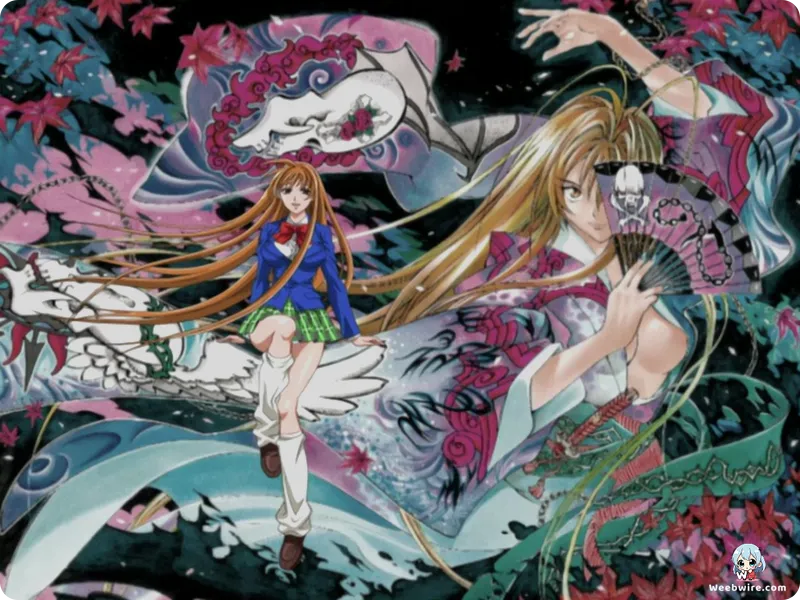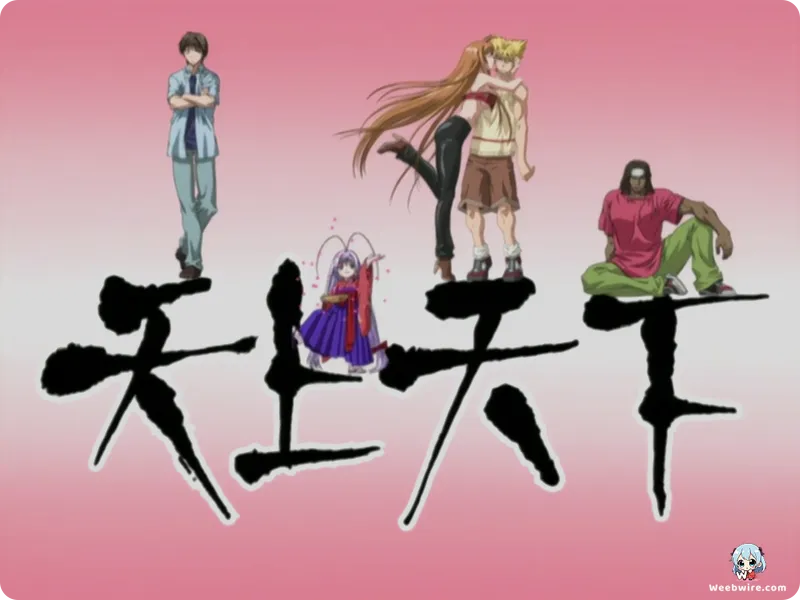Unraveling Tenjho Tenge: The Unseen Stories Behind MADHOUSE's Martial Arts Epic

Two decades after its debut, Tenjho Tenge continues to resonate with fans, a martial arts anime that left an indelible mark with its raw action, memorable characters, and distinct visual flair. Based on Oh! great's widely acclaimed manga, and brought to life by the legendary studio MADHOUSE, the series plunged viewers into the cutthroat world of Todo Academy, where brutal combat dictates hierarchy. While the anime is celebrated for its dynamic fight choreography and unapologetic ecchi elements, a deeper dive reveals a treasure trove of production insights, narrative choices, and behind-the-scenes trivia that have shaped its enduring legacy.
Central to the Tenjho Tenge anime's narrative is its divergence from the expansive source material. Oh! great's manga, spanning an impressive 22 volumes, crafted a labyrinthine plot brimming with intricate character backstories, complex power struggles within the martial arts underworld, and a grander scale of supernatural abilities. However, the anime adaptation selectively covered only the initial 8 to 10 volumes, concluding with an open ending that left countless pivotal plot threads unresolved. This artistic decision meant that anime-only viewers were deprived of a significant portion of the manga's epic scope, including the full tragic saga of the Natsume clan, the true essence of the Dragon's Eye, and the ultimate destinies of several key players. This incomplete adaptation remains a poignant example of an anime leaving its audience yearning for a resolution that, to this day, has yet to be fully realized.

Another compelling facet is the series' instrumental role in crystallizing the iconic art style of its creator, Oh! great. While already recognized, Tenjho Tenge served as a crucible for his evolving artistic mastery. His unparalleled ability to fuse breathtakingly dynamic action sequences with meticulously detailed character designs and profoundly expressive facial animations became a signature of his craft. The intricate musculature, the fluid grace of combat, and the unique visual identity of each character were all rendered with exceptional precision, setting a new benchmark for action manga and anime. Admirers of his subsequent works, such as Air Gear or his character designs for Bakemonogatari, can readily discern the fundamental artistic principles that were refined during his tenure on Tenjho Tenge. The manga's artwork, in particular, is lauded for its stunning detail and kinetic energy, which MADHOUSE commendably endeavored to translate into animation.
Given the anime's explicit genre classifications, MADHOUSE's approach to its ecchi elements warrants particular attention. Oh! great's manga is renowned for its generous fan service, often featuring explicit scenes and provocative character designs. For its television broadcast in the mid-2000s, the Tenjho Tenge anime judiciously navigated these sensitive aspects. While the manga frequently presented more overt nudity and suggestive scenarios, the anime typically employed various censorship techniques. These included strategic camera angles, obscuring steam, dazzling light flares, or rapid cuts to imply rather than explicitly display, a common practice for TV anime adapting adult-oriented manga at the time. This adaptation strategy occasionally sparked debate among fans regarding the fidelity of the anime's tone, with many manga readers observing the toned-down nature of the anime's more risqué content.
MADHOUSE's involvement itself stands as a testament to quality. Esteemed for its diverse and high-caliber productions across a multitude of genres, MADHOUSE imbued Tenjho Tenge with its renowned animation prowess. The studio's capacity to deliver fluid, impactful fight scenes was indispensable in translating Oh! great's intense martial arts choreography into vivid animation. The meticulous rendering of combat blows, character reactions, and supernatural abilities underscored MADHOUSE's unwavering commitment to visual excellence, even within a series that adeptly balanced visceral action with fan service. Their work on Tenjho Tenge further solidified their reputation as a studio capable of executing complex action sequences and faithfully adapting distinctive artistic styles. The legendary clash between Souichiro and Mitsuomi, for instance, remains a highlight for countless viewers, a shining example of the studio's talent.
A distinctive narrative choice in the Tenjho Tenge anime was its pervasive reliance on flashbacks, particularly in the latter half of the series. While these retrospective sequences were crucial for elucidating the convoluted backstories of characters such as Maya Natsume, Mitsuomi Takayanagi, and Masataka Takayanagi, providing indispensable context for their contemporary conflicts and motivations, they occasionally disrupted the momentum of the main narrative. The anime dedicated a substantial portion of its runtime to exploring the past events that shaped these characters, sometimes at the expense of advancing the immediate plot involving Souichiro and Bob. This storytelling framework, while undeniably enriching character understanding, elicited mixed reactions from viewers; some lauded it as a brilliant method to deepen the world, while others felt it unduly protracted the action. Nevertheless, it undeniably furnished a tragic, compelling history that underpinned the entire conflict within Todo Academy.
Furthermore, an OVA series titled Tenjho Tenge: Ultimate Fight (also known as Tenjho Tenge: Great Round Battle) was subsequently released, aiming to expand upon the events immediately following the TV series and offer some semblance of resolution. While these episodes provided additional animated content and briefly extended the narrative, they ultimately fell short of delivering a comprehensive adaptation of the manga's extensive storyline. The OVA served more as an epilogue or an interlude, granting fans a fleeting glimpse into the animated world they cherished, but ultimately leaving the grander mysteries and profound character arcs of the manga largely unexplored. This further underscored the inherent challenge of adapting such a sprawling narrative into a constrained anime format.
Finally, the intricate character dynamics and the unique power systems within Tenjho Tenge continue to be a source of constant fascination. The Natsume clan, with their inherited abilities such as the formidable Dragon's Eye, occupies the epicenter of many conflicts. Characters like Maya, with her extraordinary physical prowess, strategic acumen, and the immense burden of her family's legacy, and her sister Aya, whose latent Dragon's Eye powers are both formidable and perilous, propel much of the plot's emotional core. The compelling juxtaposition of these powerful, often tragic, characters with the boisterous, seemingly uncomplicated protagonists Souichiro Nagi and Bob Makihara forges a captivating narrative blend of humor, drama, and intense martial arts. The exploration of their pasts, their struggles against destiny, and their relentless pursuit of strength forms the enduring appeal of the series, cementing Tenjho Tenge as a truly memorable entry in the action anime genre, despite its incomplete animated journey.
Credits
Tenjho Tenge
Author
Oh! great
Cover Art
Oh! great
Studio
MADHOUSE
Publisher
Shueisha
Producers





